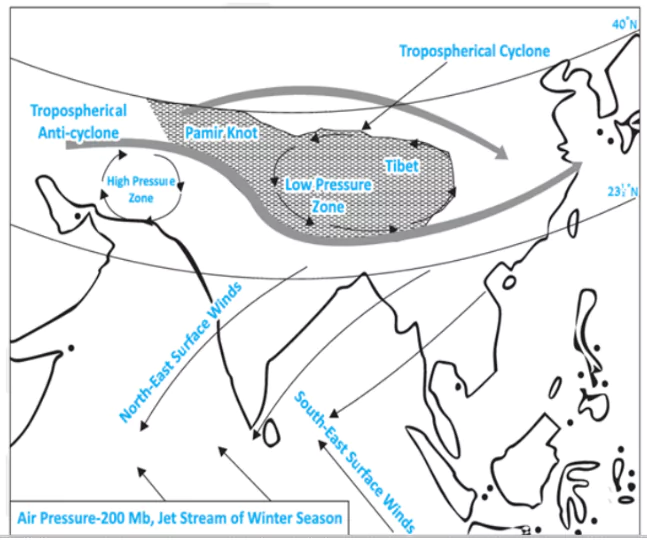![]() May 4, 2024
May 4, 2024
![]() 17131
17131
![]() 0
0
In northern India, the cold weather season starts around mid-November and lasts till February, with December and January being the coldest months. Temperatures drop from south to north, with Chennai averaging around 24°–25°C and northern plains ranging from 10°C to 15°C. This period sees warm days and cold nights, with frost in the north and snowfall in the Himalayas.

|
| Must Read | |
| Current Affairs | Editorial Analysis |
| Upsc Notes | Upsc Blogs |
| NCERT Notes | Free Main Answer Writing |
During the cold weather season, northeast trade winds prevail over India, bringing dry weather across most regions. Cyclonic disturbances from the west and northwest contribute to winter rains in the northern plains and snowfall in mountainous areas, crucial for ‘rabi’ crop cultivation. While the peninsular region experiences less defined cold weather due to the moderating influence of the sea, the season brings distinct temperature variations across the country.
<div class="new-fform">
</div>

Latest Comments